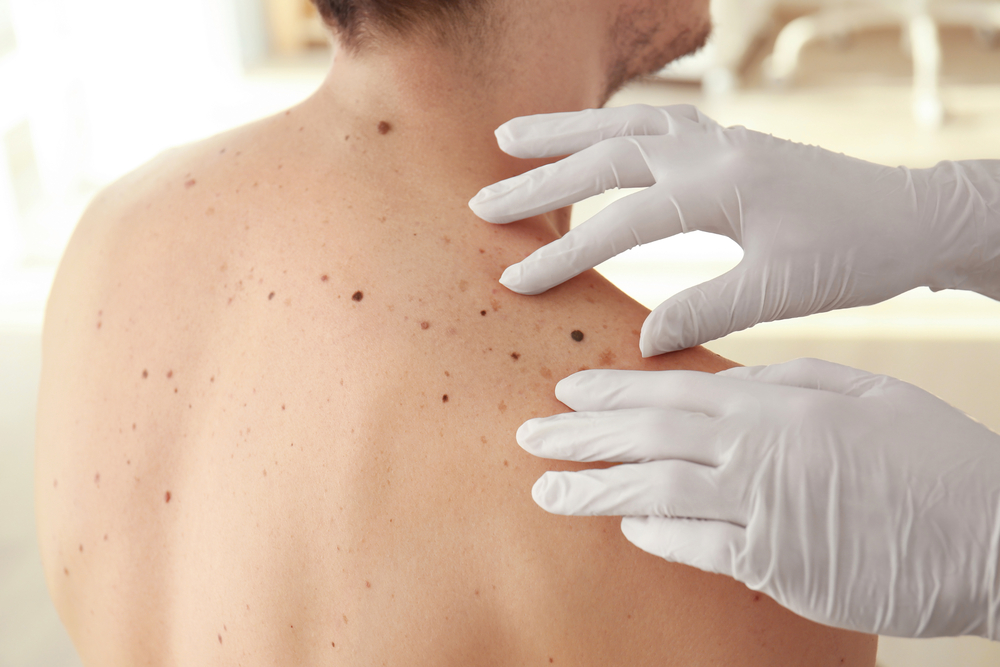Consult a professional about skin cancer risks and prevention methods.
Consult a professional about skin cancer risks and prevention methods.
Blog Article
Navigating Skin Cancer Cells Treatment: The Vital Function of Mohs in Modern Dermatology Practices
Skin cancer, a difficult diagnosis, usually leaves individuals grappling with countless therapy options. Amongst these, Mohs surgical treatment stands as a sign in contemporary dermatology, renowned for its meticulous strategy to cancer elimination and preservation of bordering healthy cells. This innovative method assures not just superior cosmetic results but likewise offers instant outcomes, relieving person anxiety. As we check out the intricacies of this procedure, one will certainly appreciate its essential duty in skin cancer therapy.
Comprehending Skin Cancer Cells: Kinds and Threats
Skin cancer, a potentially serious malady, is even more widespread than many individuals understand. This illness, created by the unrestrained growth of uncommon skin cells, mainly results from DNA damages because of exposure to the sun and ultraviolet (UV) light. There are three main kinds of skin cancer cells: Basic cell cancer, Squamous cell cancer, and Cancer malignancy. While the former two are less dangerous and make up the bulk of diagnosed instances, cancer malignancy is one of the most dangerous. It accounts for only about 1% of skin cancer situations but triggers the substantial bulk of skin cancer cells fatalities - dermatologist. Danger variables consist of reasonable skin, background of sunburn, extreme sun exposure, living at high altitudes or near the equator, having several moles, a family members background of skin cancer, and weakened immune system.
What Is Mohs Surgery and How It's Changing Skin Cancer Cells Treatment
Despite the countless treatments presently available for skin cancer cells, Mohs surgery sticks out as a groundbreaking and highly efficient option. Called after Frederic E. Mohs, the physician that created the procedure, Mohs surgical procedure is an accurate medical strategy used to deal with skin cancer cells. Throughout the procedure, thin layers of cancer-containing skin are considerably removed and taken a look at till only cancer-free tissue stays. This strategy allows the specialist to validate that all cancer cells have been eliminated at the time of surgery. This degree of precision, integrated with the capability to save as much healthy cells as possible, is transforming skin cancer cells treatment. As a result, Mohs surgical treatment has actually ended up being a foundation of modern dermatology techniques.
The Advantages of Mohs Surgery Over Typical Skin Cancer Cells Therapies
Building on the ingenious nature of Mohs surgical treatment, it's critical to consider its many advantages over conventional skin cancer treatments. Unlike conventional procedures, Mohs uses a greater treatment like this price, frequently reaching 99% for new treatments and 94% for persistent cancers. Additionally, it lessens damages to healthy and balanced skin, leading to less scarring and boosted aesthetic outcomes.
The Treatment of Mohs Surgical Treatment: What to Expect During the Refine

Prospective Side Results and Post-Operative Treatment of Mohs Surgical Treatment
Undertaking Mohs surgical treatment, like any type of various other operation, involves potential negative effects that individuals need to understand. Common negative effects include discomfort, wounding, and swelling at the surgery site. These are usually momentary and manageable with non-prescription pain medication and ice packs. In rare instances, individuals might experience infection, bleeding, or an allergic response to the local anesthetic. Post-operative treatment is crucial to recovery and reducing negative effects. This commonly entails maintaining the injury tidy and completely web dry, taking proposed drugs, and avoiding arduous tasks. Patients ought to also participate in all follow-up visits for injury treatment and surveillance. Sometimes, additional browse around this web-site treatments might be required to ensure total elimination of the malignant cells. Adhering to these post-operative treatment standards can significantly enhance recovery and end results.
Final thought

Report this page